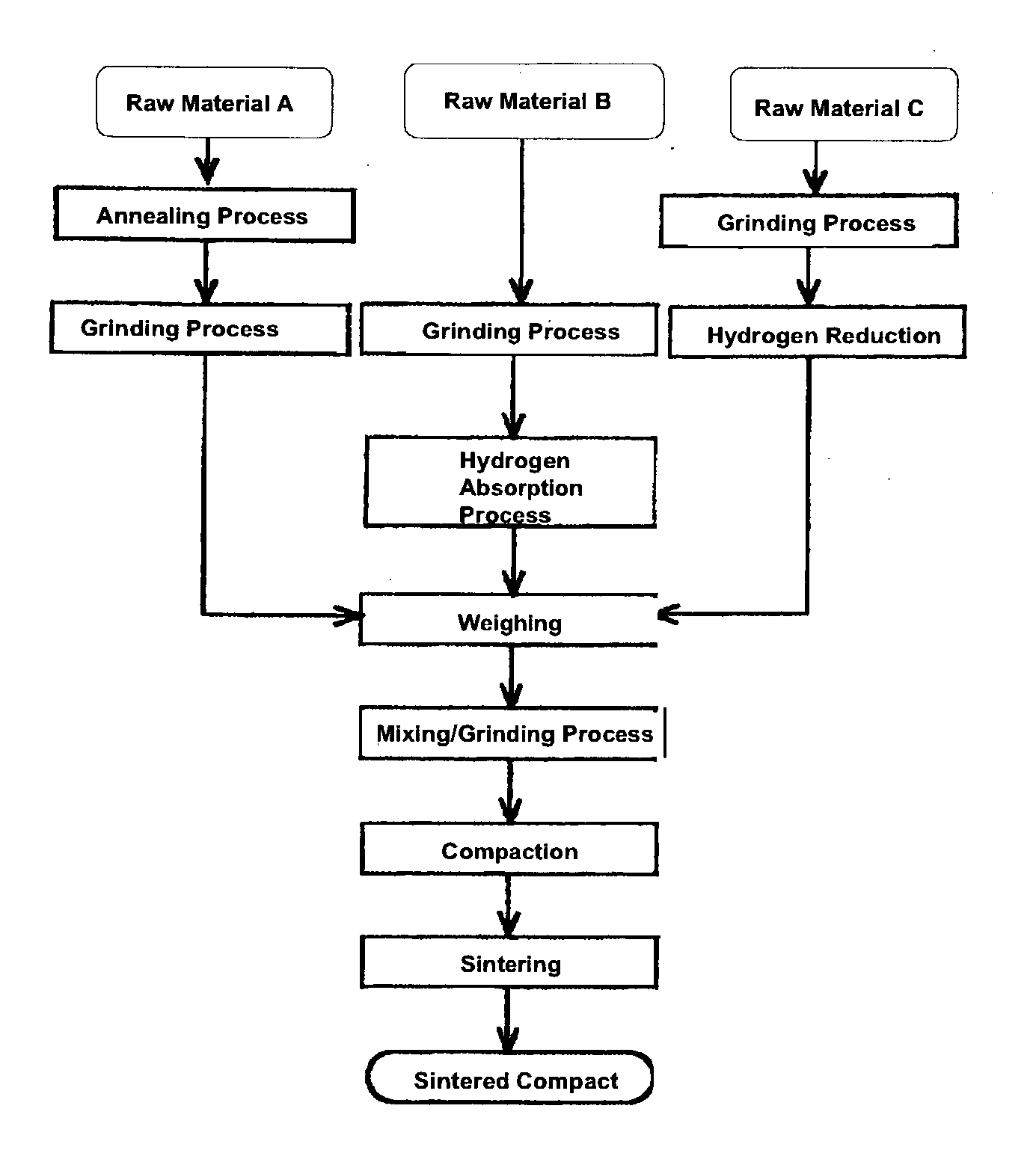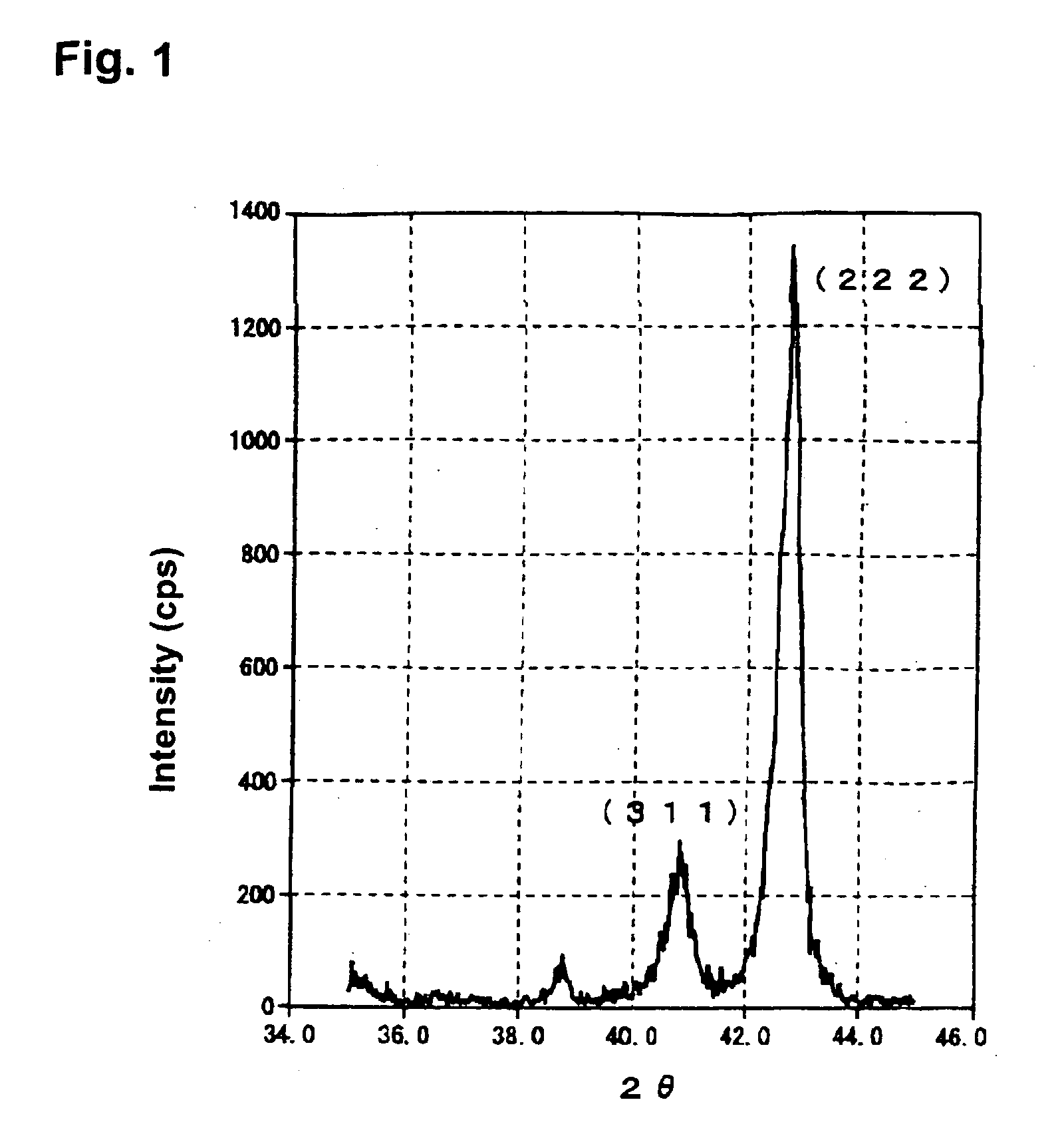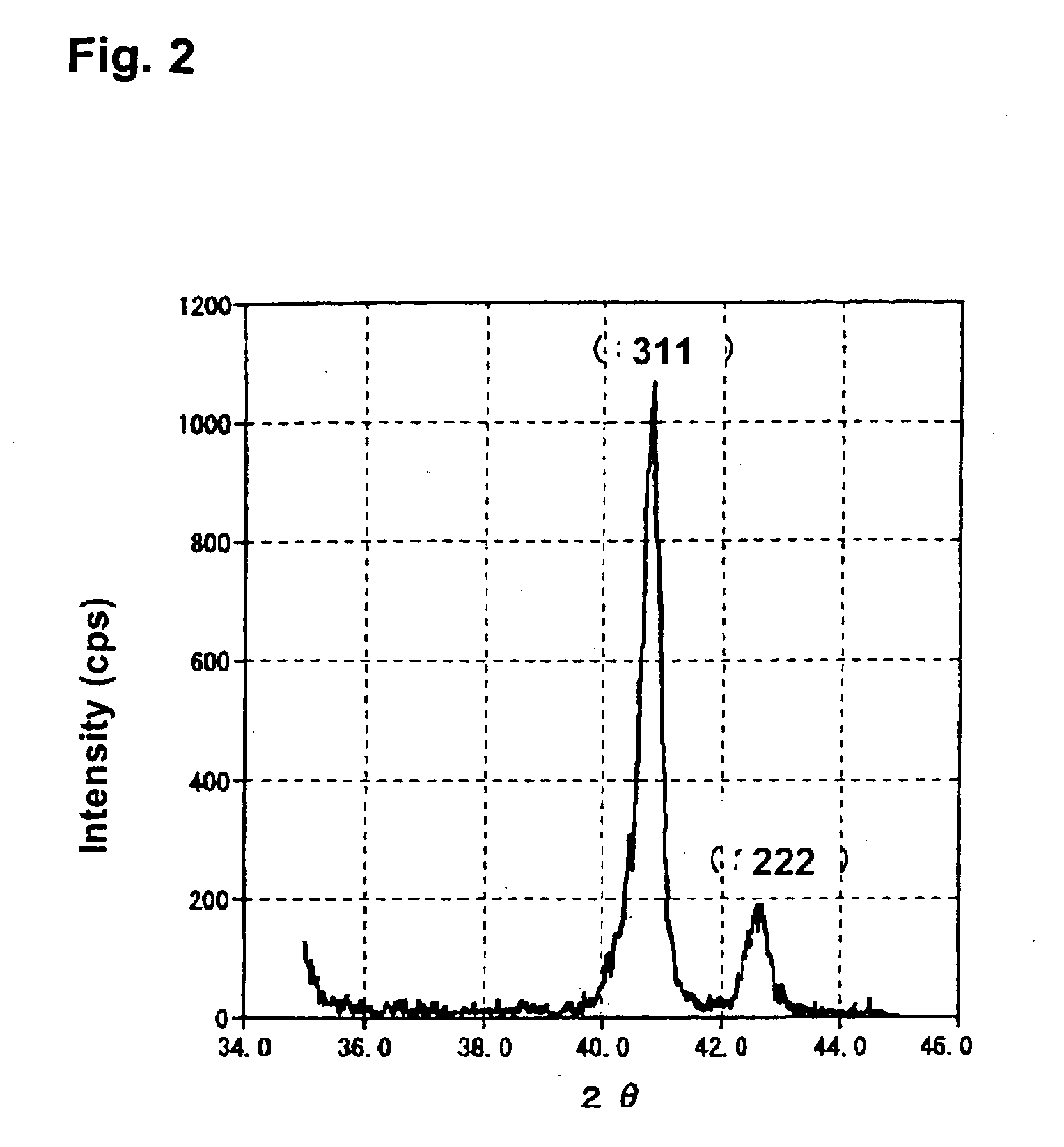Method for preparing sintered product, sintered product and magnetostriction material
a technology of magnetostriction material and sintered product, which is applied in the field of preparation of sintered product, sintered product and magnetostriction material, can solve the problems of impede the manufacture of high density sintered compact, diminishing magnetostrictive properties, and manufacturing method proposed by croats that yield only about 86% density, and achieves low internal pressure and little internal strain.
- Summary
- Abstract
- Description
- Claims
- Application Information
AI Technical Summary
Benefits of technology
Problems solved by technology
Method used
Image
Examples
embodiment example 2
[0159] For a raw material A, Tb, Dy and Fe were weighed out and fused in an Ar gas atmosphere to make an alloy having the composition Tb.sub.0.4Dy.sub.0.6Fe.sub.1.93. For a raw material B, Dy was made to absorb hydrogen to make DyH.sub.2. For a raw material C, Fe was used. The raw materials A, B and C were mixed and ground with an atomizer in an Ar gas atmosphere. The average particle size was measured using a subsieve sizer (by Fisher).
[0160] Next, the resulting powder was compacted into a cylindrical shape with dimensions of 3.5.times.30 mm in a magnetic field of 80.times.10.sup.4 A / m. The temperature of the green compact was raised in an Ar gas atmosphere and when the temperature reached 600.degree. C., the green compact was sintered in vacuum. The temperature profile for this process is shown in FIG. 13. The sintered compact was then HIP-treated. The temperature and pressure profiles for this process are shown in FIG. 14. The HIP-treated product was then annealed. The temperatur...
embodiments examples 3 and 4
[0170] Sintered compacts in Embodiment Examples 3 and 4 were manufactured in the same way as Embodiment Example 2, except that sintering was conducted in a mixed gas atmosphere of hydrogen:Ar=100:0 for Embodiment Example 3 and in a mixed gas atmosphere of hydrogen:Ar=65:35 for Embodiment Example 4.
embodiment example 5
[0176] For a raw material A, Tb, Dy and Fe were weighed out, fused in an inert atmosphere of Ar gas, and an alloy having the composition Tb.sub.0.4Dy.sub.0.6Fe.sub.1.93 was made. The alloy was heat treated for annealing, the concentration distribution of each of the metal elements when making the alloy was made uniform, and the heterogeneous phases that precipitated were eliminated. Next, the raw material A was ground.
[0177] For a raw material B, Dy and Fe were weighed out and fused in an inert atmosphere of Ar gas, and an alloy having the composition Dy.sub.2.0Fe.sub.1.0 was made. Next, the alloy was ground. After that, the raw material B was held in a mixed atmosphere of hydrogen and Ar gases and hydrogen absorption-treated.
[0178] For a raw material C, Fe that was reduction-treated to remove oxygen in a hydrogen gas atmosphere was used.
[0179] Next, the raw materials A, B and C were weighed out separately and mixed and ground. An atomizer (by Tokyo Atomizer Manufacturing Co., Ltd.)...
PUM
| Property | Measurement | Unit |
|---|---|---|
| temperature | aaaaa | aaaaa |
| temperature | aaaaa | aaaaa |
| grain size | aaaaa | aaaaa |
Abstract
Description
Claims
Application Information
 Login to View More
Login to View More - R&D
- Intellectual Property
- Life Sciences
- Materials
- Tech Scout
- Unparalleled Data Quality
- Higher Quality Content
- 60% Fewer Hallucinations
Browse by: Latest US Patents, China's latest patents, Technical Efficacy Thesaurus, Application Domain, Technology Topic, Popular Technical Reports.
© 2025 PatSnap. All rights reserved.Legal|Privacy policy|Modern Slavery Act Transparency Statement|Sitemap|About US| Contact US: help@patsnap.com



